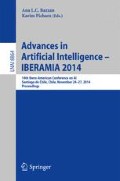Abstract
Classifying malware into correct families is an important task for anti-virus vendors. Currently, only some of them will recognize a particular malware. Even when they do, they either classify them into different families or use a generic family name, which does not provide much information. Our method for malware family identification is based on the observation that closely related malware have heavy overlap of strings. We first created two kinds of prototypes from printable strings in the malware: one using term frequency–inverse document frequency (tf-idf) and the other using the prominent strings extracted from the vocabulary. We then used these prototypes for classification. We achieved an accuracy of 91.02 % by considering the entire vocabulary and an accuracy of 80.52 % by considering 20 prominent strings for each malware family. Our accuracy is high enough for our system to be used to classify even those malware that can confuse the anti-virus vendors.
Access this chapter
Tax calculation will be finalised at checkout
Purchases are for personal use only
Preview
Unable to display preview. Download preview PDF.
References
Park, Y., Reeves, D., Mulukutla, V., Sundaravel, B.: Fast malware classification by automated behavioral graph matching. In: Proceedings of the Sixth Annual Workshop on Cyber Security and Information Intelligence Research, CSIIRW 2010, pp. 45:1–45:4. ACM, New York (2010)
Bailey, M., Oberheide, J., Andersen, J., Mao, Z.M., Jahanian, F., Nazario, J.: Automated classification and analysis of internet malware. In: Kruegel, C., Lippmann, R., Clark, A. (eds.) RAID 2007. LNCS, vol. 4637, pp. 178–197. Springer, Heidelberg (2007)
Tian, R., Batten, L., Islam, M., Versteeg, S.: An automated classification system based on the strings of trojan and virus families. In: 2009 4th International Conference on Malicious and Unwanted Software (MALWARE), pp. 23–30 (2009)
Shabtai, A., Moskovitch, R., Elovici, Y., Glezer, C.: Detection of malicious code by applying machine learning classifiers on static features: A state-of-the-art survey. Information Security Technical Report 14, 16–29 (2009)
Han, E.-H.S., Karypis, G.: Centroid-based document classification: Analysis and experimental results. In: Zighed, D.A., Komorowski, J., Żytkow, J.M. (eds.) PKDD 2000. LNCS (LNAI), vol. 1910, pp. 424–431. Springer, Heidelberg (2000)
Debole, F., Sebastiani, F.: Supervised term weighting for automated text categorization. In: Proceedings of the 2003 ACM Symposium on Applied Computing, SAC 2003, pp. 784–788. ACM, New York (2003)
Wei, C., Sprague, A., Warner, G.: Clustering malware-generated spam emails with a novel fuzzy string matching algorithm. In: Proceedings of the 2009 ACM Symposium on Applied Computing, pp. 889–890. ACM (2009)
Author information
Authors and Affiliations
Corresponding author
Editor information
Editors and Affiliations
Rights and permissions
Copyright information
© 2014 Springer International Publishing Switzerland
About this paper
Cite this paper
Shrestha, P., Maharjan, S., de la Rosa, G.R., Sprague, A., Solorio, T., Warner, G. (2014). Using String Information for Malware Family Identification. In: Bazzan, A., Pichara, K. (eds) Advances in Artificial Intelligence -- IBERAMIA 2014. IBERAMIA 2014. Lecture Notes in Computer Science(), vol 8864. Springer, Cham. https://doi.org/10.1007/978-3-319-12027-0_55
Download citation
DOI: https://doi.org/10.1007/978-3-319-12027-0_55
Published:
Publisher Name: Springer, Cham
Print ISBN: 978-3-319-12026-3
Online ISBN: 978-3-319-12027-0
eBook Packages: Computer ScienceComputer Science (R0)

